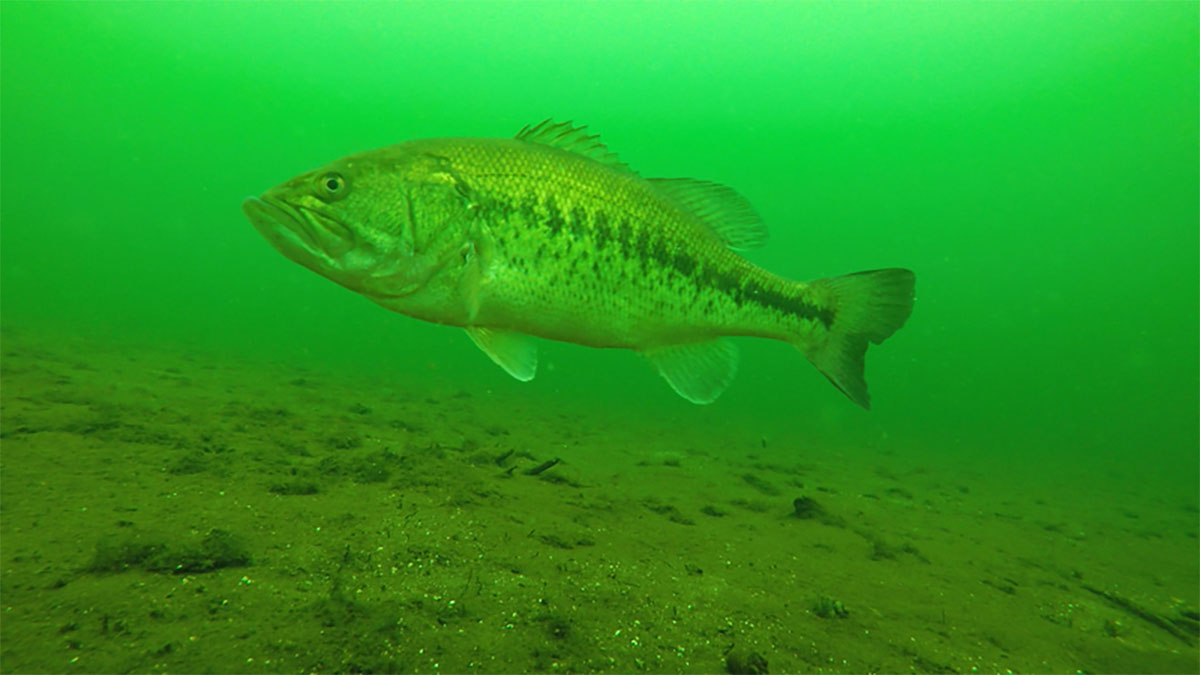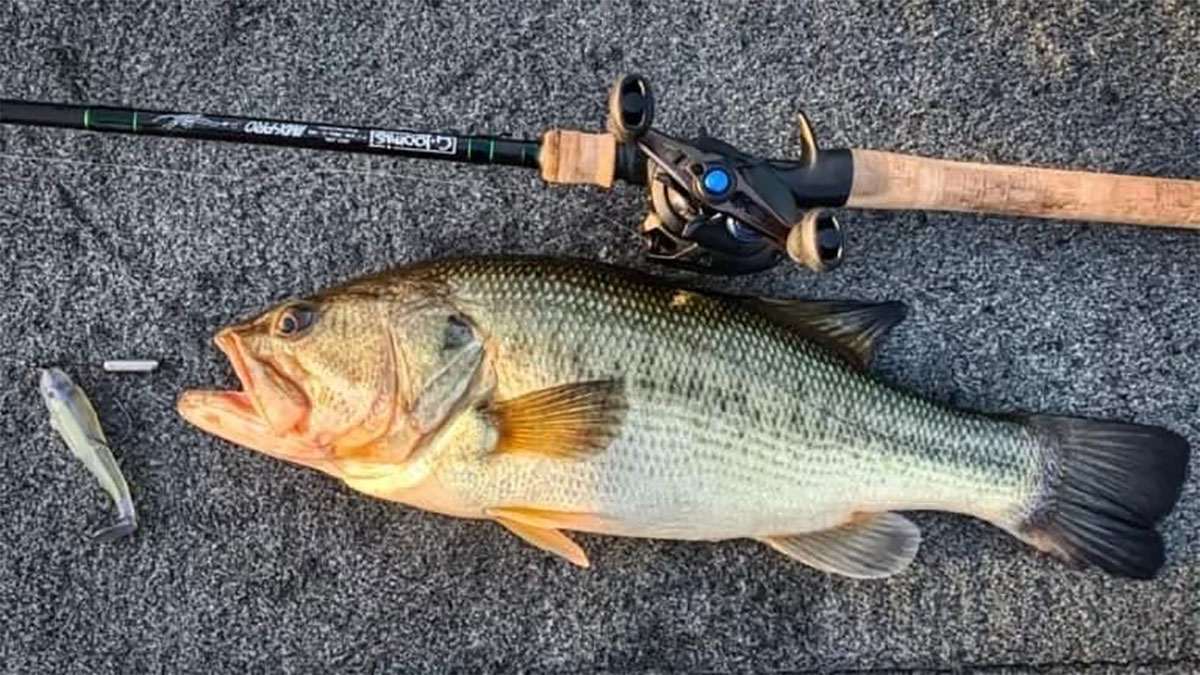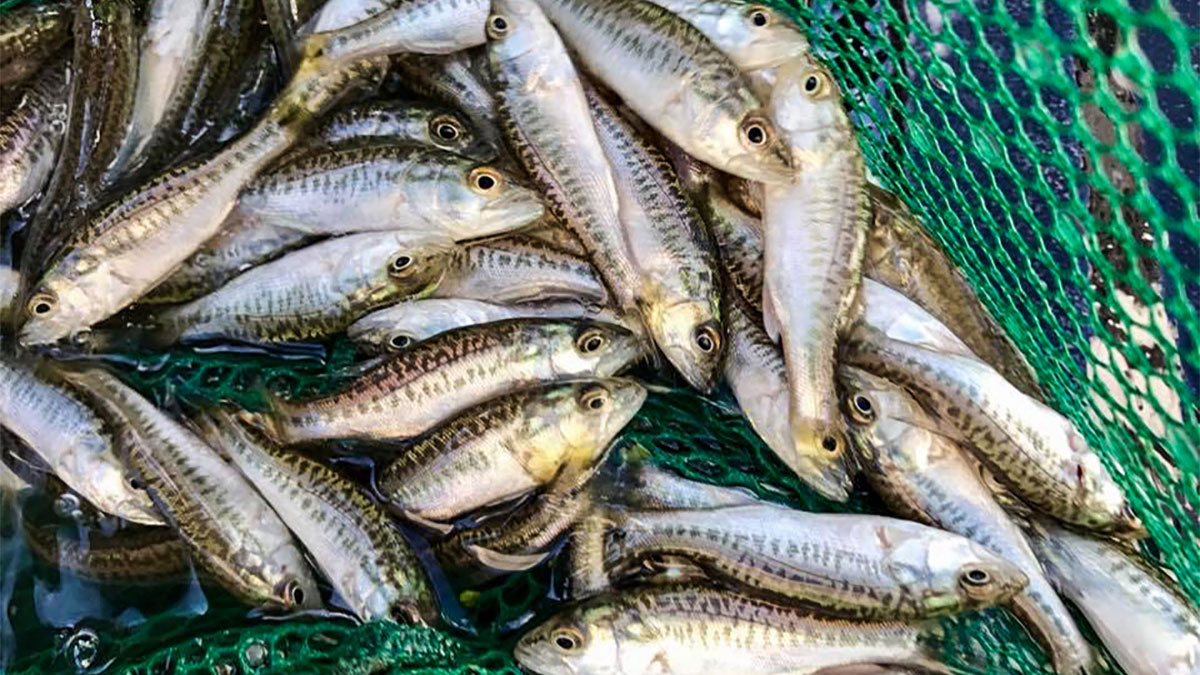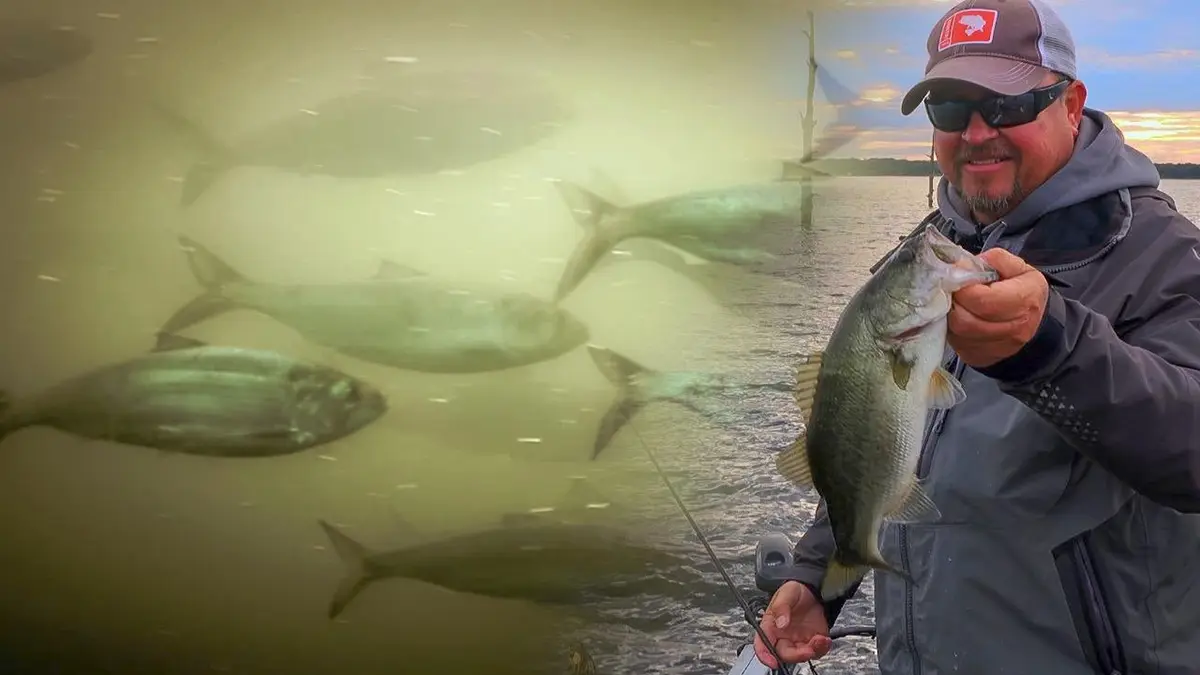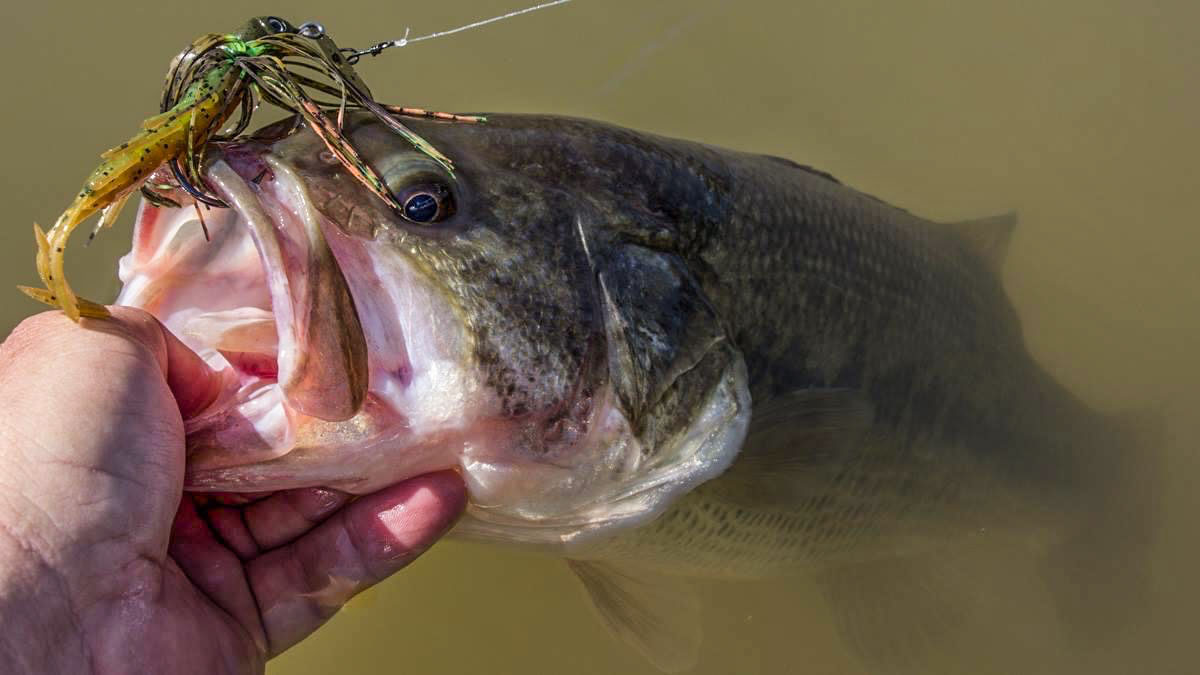This is the complete guide to the most popular warm-water sportfish in America, the largemouth bass. We have compiled everything you need to know about this species and have answers to the burning questions any fishing enthusiast would want to know. Let’s dive into the world of largemouth bass.
LARGEMOUTH BASS HISTORY
Officially, the largemouth bass is known by the scientific name of Micropterus salmoides. It is a species of black bass (genus Micropterus), which includes smallmouth and spotted bass and is in the sunfish family (Centrarchidae), which include bluegill sunfish and crappie.
The largemouth bass was first formally described by French naturalist Bernard Germain de Lacepede in 1802 and named Labrus salmoides. The scientific name then changed several times from Micropterus nigricans in 1876, to Micropterus pallidus in 1878 and finally to Micropeterus salmoides in 1884. However researchers have recently disputed the actual genetics of the fish described originally by Lacepede and now believe that to have been a Florida bass Micropterus salmoides floridanus from South Carolina. This could mean a scientific name change is coming for both the largemouth and Florida bass in the coming years.
Largemouth bass are called many names including bucket mouth, green trout, widemouth, bigmouth, black bass, northern bass, native bass and many more. They serve as the official state fish of Alabama, Florida, Georgia and Mississippi.
The biggest largemouth bass ever caught weighed 22 pounds 4 ounces.* And there is actually a tie for the record. You can see the full story in our largemouth world record bass post.
LARGEMOUTH BASS IDENTIFICATION
Characteristically, the largemouth bass is an elongated fish with green- to grayish-coloration on the top portion of its body and white or light underbelly. Coloration of each individual will vary greatly due to water color, clarity, time of year, habitat and depth. You may even notice a fish caught and held in a livewell will change color throughout the day.
The sides of the largemouth can have dark-gray to black lateral blotching that together create a lateral stripe. The anal fins will have 3 spines and 11 to 12 soft rays. The dorsal fins are divided with 9 hard spines on the first dorsal and 12 to 14 soft rays on the second dorsal fin.
The biggest distinguishing feature of a largemouth bass versus other black bass species is its upper jaw extending beyond the rear margin of the eye when the mouth is closed. You should not rely on the presence or absence of a tooth patch on the tongue as tooth patches are present in a percentage of all black bass species. Most states are adopting this philosophy as well for their regulations.
Largemouth bass, Florida bass and their sub-crosses are extremely difficult to delineate from each other. Technically, a lateral scale count along the lateral line can indicate the presence of Florida genetics within an individual as Florida bass have smaller scales then pure largemouth bass. Florida should have 69 to 73 lateral line scales while largemouth bass have 59 to 65. To definitively identify the genetics of a largemouth bass, genetic analysis must be done using tissue or mucus samples.
LARGEMOUTH BASS LOCATION
The largemouth bass is, by far, the most widely distributed bass species with a native range form the Atlantic coast excluding the states north of Virginia and extending west throughout the Mississippi river drainage and stopping in the mid great plains region.
The northern native boundary was southern Ontario throughout the Great Lakes basin and the southern boundary was the Gulf of Mexico excluding much of Florida. Today, however, largemouth bass are established in every state in the continental U.S. and Hawaii, with one individual found in Alaska in 2018. They have also expanded further throughout the southern edge of Canada and throughout Mexico.
Outside of North America, largemouth bass have been introduced in countries including Cuba, Guatemala, Honduras, Puerto Rico, Columbia, Brazil, South Africa, Zimbabwe, Kenya, Portugal, Spain, France, Germany, Italy, Hungry, Croatia, Serbia, Lebanon, Japan, Philippines, Russia, China, South Korea, Fiji and New Zealand. In fact, largemouth bass have been found on every continent except Antarctica and mainland Australia.
In many of these regions, introductions were unintentional and largemouth bass are considered an invasive species leading to the reduction of native species. This has led to eradication efforts throughout much of the world.
LARGEMOUTH BASS SPAWNING
The spawning process starts each spring when water is sustained above 60 degrees, with the majority of active spawning occurring between 65 and 75 degrees. Largemouth bass become sexually mature at 1 year of age or when they reach about 10 inches in length.
Occasional fall or winter spawning can occur in the southern reaches of the U.S.. The male largemouth selects a solitary nesting site most typically near the shoreline in a depth of 1 to 4 feet. Close or direct proximity to hard structure or vegetation is highly desirable. Exceptions do occur and at times largemouth bass can spawn in deeper water or on suspended hard structure in open water especially in clear-water bodies.
Once the nesting site is selected by the male, it uses its tail to fan the bottom sediment exposing gravel and other hard substrate. The completed nest will be round with a diameter close to double the male’s total length. The female joins a male in the nest and after a short courtship, both fish will lay on their sides simultaneously releasing eggs and fertilizing them.
The eggs are adhesive and fall into the nest sticking to the exposed hard substrate. An individual female will have 2,000 to 7,000 eggs per pound of body weight but she will make multiple spawning attempts laying several hundred to thousands of eggs over the spawning season with potentially multiple males. After each successful spawning attempt the female will leave the male largemouth bass to provide protection for the nest.
The eggs will hatch after 2 to 10 days depending on the water temperature, with warmer water causing eggs to hatch faster. Typically individual egg size corresponds to the body size of the female, with larger eggs coming from larger females.
Initially after hatching the fry will be transparent, approximately 3 mm in length and have no mouth parts. Mouth parts develop within about 18 hours, however, they remain within the nest absorbing their yolk sacs for 1 to 2 weeks. After the yolk sac is absorbed, swim up begins and fry congregate in a school and feed on zooplankton.
At 2 inches in length largemouth bass will become both piscivorous consuming small fish and carnivorous consuming small animals and crustaceans. Once bass reach this fingerling status their growth rates and survival are highly dependent on their environment. As a general rule largemouth hatched earlier in the year that survive to become fingerlings typically obtain a size advantage over subsequent hatches later in the year.
LARGEMOUTH BASS SIZE AND LIFESPAN
In optimum conditions, growth rates of 2 pounds per year can be obtained but in most natural environments, 1/2-pound per year is more realistic. Largemouth bass grow continuously throughout their lives based on forage consumption. They must consume 5 pounds of forage per pound of body weight annually as a maintenance diet and to increase in size need to consume an additional 10 pounds of forage to gain 1 pound of body weight.
Largemouth bass found in cooler climates will have a slower growth rate but longer life span averaging 15 years old with a maximum of 23-24 years. In southern climates, growth rates are increased but life expectancy is shortened to an average of 10 years and a maximum of 16 years. Maximum size is also tied somewhat to genetic lineage with pure largemouth bass rarely growing to a maximum size over 10 pounds and Florida bass growing to a maximum size exceeding 20 pounds. Additionally, sex greatly determines growth with males rarely exceeding 5 pounds, leaving only female largemouth bass with the potential to reach maximum size for the species.
LARGEMOUTH BASS DIET
Largemouth bass are often referred to as sight feeding ambush predators, which is supported by the general body shape, eye size and affinity to relate to structure. In reality, largemouth are not just ambush predators but instead opportunistic generalists. They consume forage items by swallowing them whole rather than biting off part of the prey.
Capturing prey is achieved by rapidly expanding the mouth through a gill flair. This creates a suction feeding mechanism as water is pulled into the negative space created within the mouth. Swallowing forage whole allows the largemouth to consume any forage item that has a depth-of-body that does not exceed its mouth width. Once within the mouth, pharyngeal teeth in the back of the throat, often referred to as “crushers” hold forage and slowly allow it to be pushed through the esophagus.
Capturing forage is often done in an ambush or in a reactive manner but the largemouth bass has a maximum swimming speed of 2 1/2 times its body length per second making chasing down and capturing forage a viable option at any time. Water clarity will impact feeding success as largemouth bass rely greatly on sight.
Unfortunately, they do have a couple of blind spots due to the location of their eyes. These blind spots are directly at the tip of their nose, directly below their body and directly behind them. These blind spots are mitigated by the largemouth bass ability to sense vibration and changes within the water body using its lateral line. The lateral line is a series of pores that contain hair-like sensors that will sense movement. The largemouth bass can utilize smell using four nostrils or nares. They can also taste with thousands of taste buds located throughout the mouth and throat.
The specific reason largemouth bass select a forage item is not limited to hunger. Instead, bass consume prey for a wide variety of reasons including defense, curiosity, reaction, aggression and of course, hunger. The selection of prey size and species is somewhat dependent on the naturally occurring abundance of prey items within the fishery as well as habitat which can allow certain forage items to become more vulnerable to predation while protecting others.
Common forage items include shad species, crayfish, sunfish and insects. There is some correlation between largemouth bass size and forage selection with fingerling bass preferring minnow species, juvenile sunfish and insects. As largemouth bass increase in size, food items and types increase in size and diversity.
Largemouth bass are ectothermic, therefore their body temperature is naturally barely above that of its environment. This results in a metabolism driven primarily by water temperature. A forage item consumed in the winter will take longer to digest, several days, compared to summer temperatures when forage can digest in several hours. At any time due to stress, as defense, or even to attempt to escape, largemouth bass may rapidly regurgitate forage. Many studies of stomach contents result in more than 50% of the survived population having empty stomachs.
LARGEMOUTH BASS HABITAT
Largemouth bass can be found in most freshwater environments within the US, from ponds and creeks to reservoirs, natural lakes and rivers. They can even tolerate fairly brackish water with salinities up to 12 parts per thousand. They thrive in environments that are warm, nutrient rich and with a water clarity over 18 inches. Their dissolved oxygen tolerance is as low as 1.5 ppm for short intervals but their preference is 4 ppm or greater.
They can generally be found in slow moving water with some sort of stationary cover nearby. This cover could be rock, timber, brush, docks, vegetation or any other object. Few habitat components affect largemouth bass in the way that aquatic vegetation will. As vegetation increases in density and complexity the survival and abundance of largemouth bass will increase. Until aquatic plant density reaches 30% area of coverage, at that density and higher largemouth bass individual body condition, abundance and home range size will decrease.
FISHING FOR LARGEMOUTH BASS
Now that you know the biology and habits of the largemouth bass, you will be more prepared to chase a state record bass in your nearby lakes or just enjoy a lot more. If you want to learn how to catch bass and some of the best bass fishing lures, we have you covered in our many resources. You can optimize your chances by choosing the best times to fish and also considering seasonality and prevalent weather patterns.
Then from there you want to choose a few good bass fishing rods, spinning reels and baitcaster reels to cover all your bases and you’ll be all set to tackle some bass fishing. Bass fishing can be a lot of fun and a great passion and hobby to pursue as well as a much needed escape from stress for many years.
LARGEMOUTH BASS THREATS
One threat to largemouth bass is the spread of Largemouth Bass Virus (LMBV) Ranavirus Sp. The LMBV was first found in Florida in 1991 and dispersed throughout the southern U.S. over the early 90s. The virus caused a well-known fish kill in 1995 in Santee Cooper, S.C. and has been responsible for an additional 25 fish kills throughout the US.
The first reports of the virus in a hatcher was in 1999. Transmission of the virus is typically through direct contact from one fish to another and can live in the water for 3 to 4 hours. The signs of the virus are increased blood flow to the skin, increased abdomen size, bloated swim bladder, lesions, organ enlargement and discoloration, inability to maintain equilibrium and sudden death of larger fish.
Following initial exposure, fish tend to produce antibodies that limit the severity of future disease. Today, LMBV has spread northward throughout the Great Lakes systems and spread to other black bass species including smallmouth bass but poses no threat to humans. Mitigating the spread of the virus is best done by angler cleaning livewells with a 10% bleach solution.
Golden algae Prymnesium parvum is an additional threat to largemouth bass. This microscopic, single-celled algae was first found in North America in Texas in 1985 on the Pecos River. It now occurs in over 20 states. Golden algae prefer slightly saline waters, pH above 8 and cooler water.
When water conditions are optimal, they will reproduce creating a large bloom then release toxins to kill zooplankton for food. These toxins will also affect gill-breathing organisms including fish, mussels and tadpoles, leading to mortality. At this time, management of golden algae is limited to seasonal phosphorus reductions and algaecides when golden algae blooms occur. At this time, there is no know human risk of golden algae toxins.
LARGEMOUTH BASS FACTS YOU NEED TO KNOW
- The oldest bass fossil ever found was in Texas and dated back to 23 million years ago.
- The longest-living largemouth bass in scientific record was caught in 1992 in Mariaville Lake, New York. Otolith ring routes indicated an estimated age between 23 and 24 years old.
- The world-record largemouth bass, as recognized by IGFA, is a tie with George Perry’s 22-pound, 4-ounce bass caught in Montgomery Lake, Georgia in 1932 and Manabu Kurita’s 22-pound, 5-ounce bass caught in Lake Biwa, Japan in 2009.
- “Dottie”, a fish from Dixon Lake, Calif., was foul-hooked in 2006 and weighed 25 pounds, 1 ounce. The fish was never legally caught and was found dead in 2008 weighing 19 pounds when she was found.
- “Ethel” is likely the most famous largemouth bass of all time. She was ShareLunker No. 1 caught by Mark Stephson in November 1986 at Lake Fork, Texas. At the time, she weighed 17.67 pounds. She went on to live at the Springfied, Mo. Bass Pro Shops and had an estimated 20 million visitors before her death in 1994. Ethel also had 1,500 people attend her memorial service. At death, she weighed over 20 pounds with a length of 28 inches and a girth of 32 inches.
ABOUT THE AUTHOR
Steven Bardin obtained his bachelor’s degree in Freshwater Biology from Tarleton State University in 2009 and his master’s degree in Fisheries Science from Texas A&M in 2013. While at Tarleton, Bardin worked for Harrell Arms at Arms Fish Farm and Bait Company. In 2011 he founded Texas Pro Lake Management. He strives every day to take a scientific approach to helping his clients maximize the production of their fisheries.
Outside of TPLM Bardin has written for Wired2Fish, taught as an adjunct professor for Tarleton State University, and served as an instructor and camp coordinator for Bass Brigade youth leadership camp. In 2021, Bardin helped Major League Fishing found their Fisheries Management Division and leads their conservation efforts today.
Bardin is a member of Texas Aquatic Plant Management Society, Texas Chapter of American Fisheries Society, Southern Division of American Fisheries Society, Society of Lake Management Professionals, Texas Freshwater Fishing Hall of Fame Board, Texas Brigades Board, Texas Freshwater Fisheries Advisory Committee, and the Major League Fishing Anglers Association Board.
You can follow him on Facebook and Instagram.


